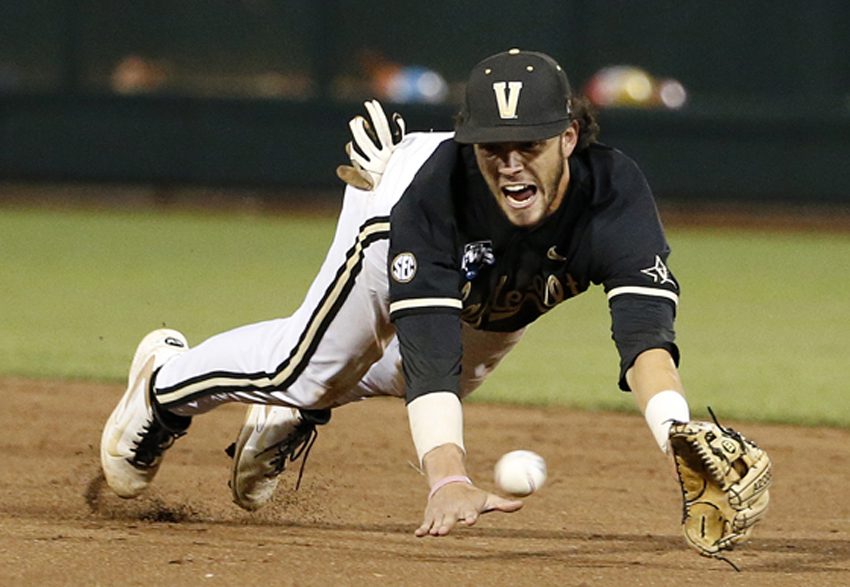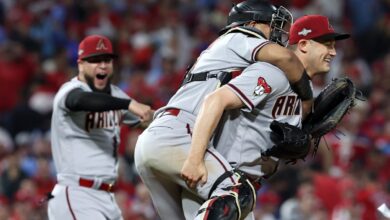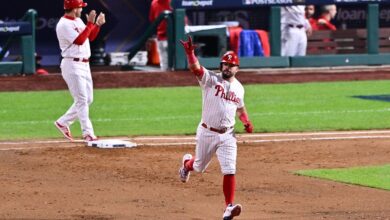
Heading into this year’s Major League Baseball winter meetings, there seemed to be a noticeable decrease in overall interest from the general public – understandable, if nothing else. After all, C.J. Wilson entered free agency widely considered the most coveted pitcher on the market, despite being a serviceable number two starter, at best, and the biggest name of them all, Albert Pujols, was almost unanimously expected to return to the St. Louis Cardinals. Not to mention that the typical big spenders – Boston, New York, Philadelphia and Chicago – entered the offseason content with their rosters, to some extent.
Then again, as is most often the case, baseball’s winter meetings have played out in a way that is anything but typical.
For instance, assuming their best Yankees impression, at least for just this one winter, has been the Miami Marlins. Go ahead, read it again; no typos there. Yes, the new-look, new-name, new-stadium Marlins – who look like they won Extreme Home Makeover and the lottery simultaneously – are spending money like never before, to say the very least. The signings of Ozzie Guillen, Jose Reyes, Heath Bell and Mark Buehrle – less than 10 percent of the 40-man roster plus a manager – will account for $36 million on next year’s payroll alone. For the sake of historical perspective, consider that the Marlins’ entire 2009 payroll was roughly $37 million.
For the most part, the only other team to make a comparable splash to that of the Marlins this winter has been the Los Angeles Angels of Anaheim. In a matter of what seemed like mere seconds, the Angels managed to lure Pujols away from the Cardinals and land Wilson – the best hitter and pitcher available on the market.
On the other end of the spectrum, we have teams like St. Louis and Milwaukee – both having lost franchise first baseman – scrambling to fill vacancies and remain competitive. In the middle, we find the majority of remaining organizations evaluating Plan Bs and waiting as things shake out before last-minute signings and trades are executed.
However, it takes more than a spending spree to cultivate success in Major League Baseball – especially that of the instantaneous variety – and sometimes standing idly by is the best move you can make.
That being said, just who can be considered winners and losers of the offseason to this point?
The Losers
Milwaukee Brewers — As you can see in greater detail here, Milwaukee’s all-in play last season has left them in a state of disarray. Unfortunately, it goes beyond simply losing Prince Fielder to free agency. In what was an admittedly bad stroke of luck, Francisco Rodriguez recently accepted the club’s arbitration offer. Milwaukee, who obviously made the offer knowing full-well that Rodriguez has zero intentions of playing for them next season, had done so hoping to at least receive some sort of compensation upon his departure (compensatory draft picks are only offered to teams if the player they lose was at least offered arbitration prior to signing elsewhere). Rodriguez, understanding that the Brewers cannot afford him, accepted the offer and put the burden on Milwaukee to orchestrate a trade with a team in need of a closer – not necessarily an advantageous position for management during trade talks. As I suggested in the article linked above, signing Alex Gonzalez to fill the void at shortstop was a great start for Milwaukee. Now, however, they still find themselves with an enormity of difficult decisions to make, holes to fill and not a lot of excess spending money to do so with. Despite a level of urgency amongst fans, there doesn’t seem to be similar sentiments within the organization at this point.
Miami Marlins — How could a team who already signed All-Stars Buehrle, Reyes and Bell – in addition to bringing in Guillen to manage the team – be considered a loser? Could it be that I am a jealous fan of one of the other 29 teams? On the contrary, as a Red Sox fan, I would consider myself well-versed in the dangers of signing numerous lucrative, long-term contracts. After all, my team has spent unspeakable amounts of money on the likes of John Lackey, Daisuke Matsuzaka and Julio Lugo in recent years (just to name a few). While I do love the stability and veteran presence that accompanies the signing of Buehrle, it is the additions of Reyes and Bell that I don’t necessarily agree with. With Bell, who was awarded a three-year deal worth $27 million, there are a few question marks. For one, with such a deep pool of talented free-agent relievers, one has to assume the team could have found similar production elsewhere at a lower annual price tag than $9 million. Bell, who will be 34-years-old when 2012 gets underway, will likely continue seeing a slight decrease in effectiveness as he did from 2010-11. Even so, it is the Reyes signing that I question the most.
Mostly due to hamstring issues, Reyes has averaged just 98 games played over the last three seasons. He is certainly a game-changer when healthy, but just how often will that be? Not to mention, had Miami been content with their current shortstop situation, the money given to Reyes could have been used to further entice Pujols or Fielder to joining the team. Even worse, the addition of Reyes has caused the already oft-disgruntled Hanley Ramirez to make a fuss about being asked to move to third base. Again, as a Red Sox fan, I’ve seen what an unhealthy clubhouse can do to a team, regardless of talent. It will be interesting to see just how this team gels. If they aren’t careful, Miami may be well on their way to replicating the struggles of their similarly pricey NBA counterpart, the Miami Heat.
The Winners
Chicago Cubs — The Cubs have made just one truly notable move to this point. On Thursday, the team made a trade with Colorado that brought over third baseman Ian Stewart and right-handed reliever Casey Weathers. Stewart was a great buy-low after struggling between the Rockies and their triple-A affiliate in 2011. Prior to that, Stewart averaged 23 home runs during his time in Colorado from 2009-10. Much of his struggles last season can be attributed to a wrist injury, which is now fully healthy. Stewart will likely serve as a versatile option for replacing Aramis Ramirez. Rather than going out and spending money to fill that void at third base, the Cubs are wisely waiting for next offseason – when the contracts of Ryan Dempster, Marlon Byrd and Carlos Zambrano come off the books – before diving into what will likely be a much deeper free-agent pool. Between Dempster, Byrd and Zambrano, the Cubs will have $40 million of payroll freed up a year from now. In the meantime, smart moves like acquiring veterans such as Stewart are the best way to go.
Philadelphia Phillies — The Phillies, thanks to an already potent roster, have been afforded the luxury of complacency entering this offseason. The few moves that needed to be made have been swiftly addressed. Jonathan Papelbon, arguably the best available closer on the market, was one of the first big names to be signed this winter. Also, after already acquiring Jim Thome and Ty Wigginton earlier this offseason to add bench depth, the Phillies signed outfielder Laynce Nix on Thursday to a two-year deal, adding a left-handed outfielder option to the fold. Nix can play both corner outfield spots, as well as a competent first base, and brings some more pop with his bat (16 home runs in 124 games last season with the Nationals). Philadelphia may be overshadowed in the wake of waves made within their own division by the Marlins, but they’ve made all the right moves to this point and should still be widely considered the favorite in the East.
St. Louis Cardinals — Yes, even without retaining the game’s greatest hitter, Albert Pujols, St. Louis has gone about the offseason the right way. It’s hard to refute the fact that the Cardinals are losing an icon or that their offense will not quite be the same. However, it says a lot about the organization that they were able to set aside imminent public outcry and make the correct decision for the franchise’s future. There is a reason that this team contends annually. Pujols is without a doubt, the greatest hitter of his generation. Even so, it is rarely wise to offer 10-year contracts to any player – much less one already in his thirties. That being said, the circumstances are slightly different in Los Angeles, where Pujols will have the option of playing DH later on in his career. Even without Pujols, the Cardinals are one of the most complete teams in the National League. Now, thanks to an unimaginable level of restraint, they find themselves with an additional $25 million per year for the next decade to make sure it stays that way.
The hot stove is far from cooling down. Can the Brewers do enough to remove themselves from the losers list? Will a few other teams emerge as winners towards the end of December? Only time will tell. If the past is any indication, speculation and predictions are utterly useless when it comes to Major League Baseball’s offseason.






